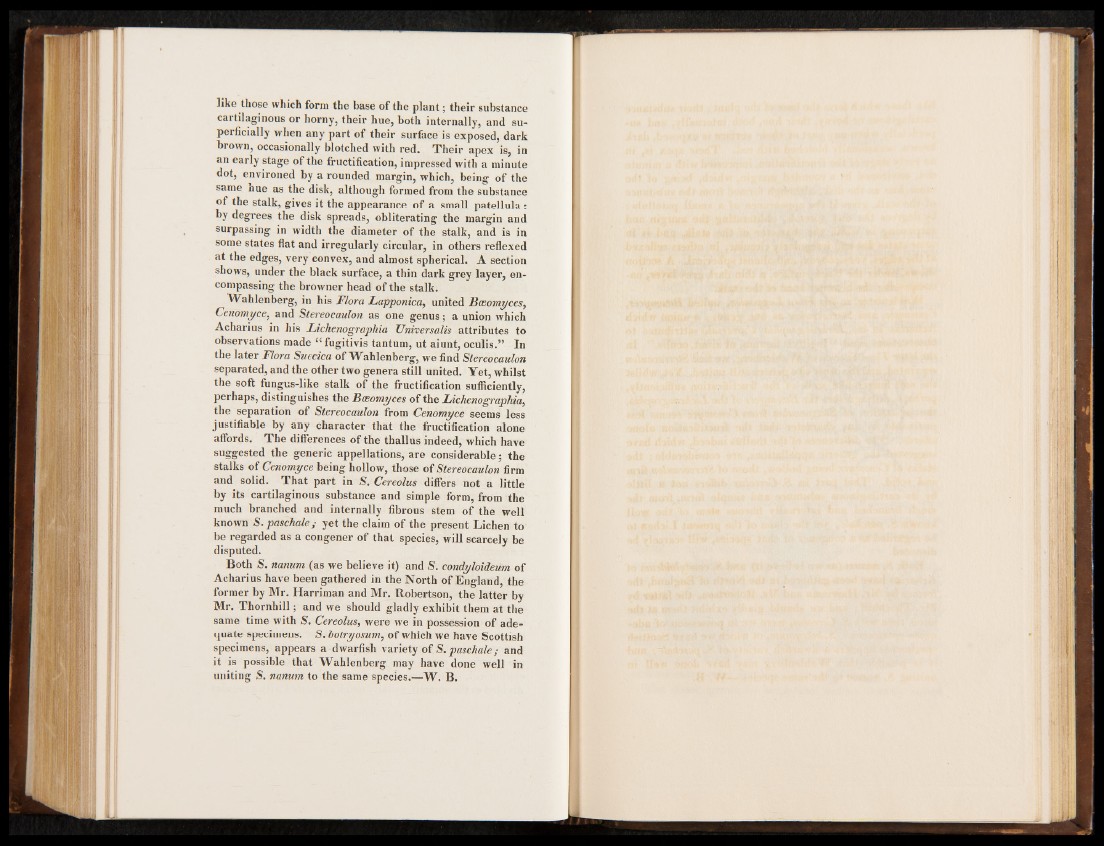
like those which form the base of the plant ; their substance
cartilaginous or horny, their hue, both internally, and superficially
when any part of their surface is exposed, dark
brown, occasionally blotched with red. Their apex is, in
an early stage of the fructification, impressed with a minute
dot, environed by a rounded margin, which, being of the
same nue as the disk, although formed from the substance
of the stalk, gives it the appearance of a small patellula :
by degrees the disk spreads, obliterating the margin and
surpassing in width the diameter of the stalk, and is in
some states flat and irregularly circular, in others reflexed
at the edges, very convex, and almost spherical. A section
shows, under the black surface, a thin dark grey layer, encompassing
the browner head of the stalk.
Wahlenberg, in his Flora Lapponica, united Boeomyces,
Cenomyce, and Stereocaulon as one genus ; a union which
Acharius in his Lichenographia Universalis attributes to
observations made “ fugitivis tantum, ut aiunt, oculis.” In
the later Flora Suecica of Wahlenberg, we find Stereocaulon
separated, and the other two genera still united. Yet, whilst
the soft fungus-like stalk of the fructification sufficiently,
perhaps, distinguishes the Bceomyces of the Lichenographia,
the separation of Stereocaulon from Cenomyce seems less
justifiable by any character that the fructification alone
affords. The differences of the thallus indeed, which have
suggested the generic appellations, are considerable ; the
stalks of Cenomyce being hollow, those of Stereocaulon firm
and solid. That part in S. Cereolus differs not a little
by its cartilaginous substance and simple form, from the
much branched and internally fibrous stem of the well
known S. paschale ; yet the claim of the present Lichen to
be regarded as a congener of that species, will scarcely be
disputed.
Both S. nanum (as we believe it) and S. condyloideum of
Acharius have been gathered in the North of England, the
former by Mr. Harriman and Mr. Robertson, the latter by
Mr. Thornhill ; and we should gladly exhibit them at the
same time with S. Cereolus, were we in possession of adequate
specimens. S. botryosum, of which we have Scottish
specimens, appears a dwarfish variety of S. paschale; and
it is possible that Wahlenberg may have done well in
uniting S. nanum to the same species.—W. B.